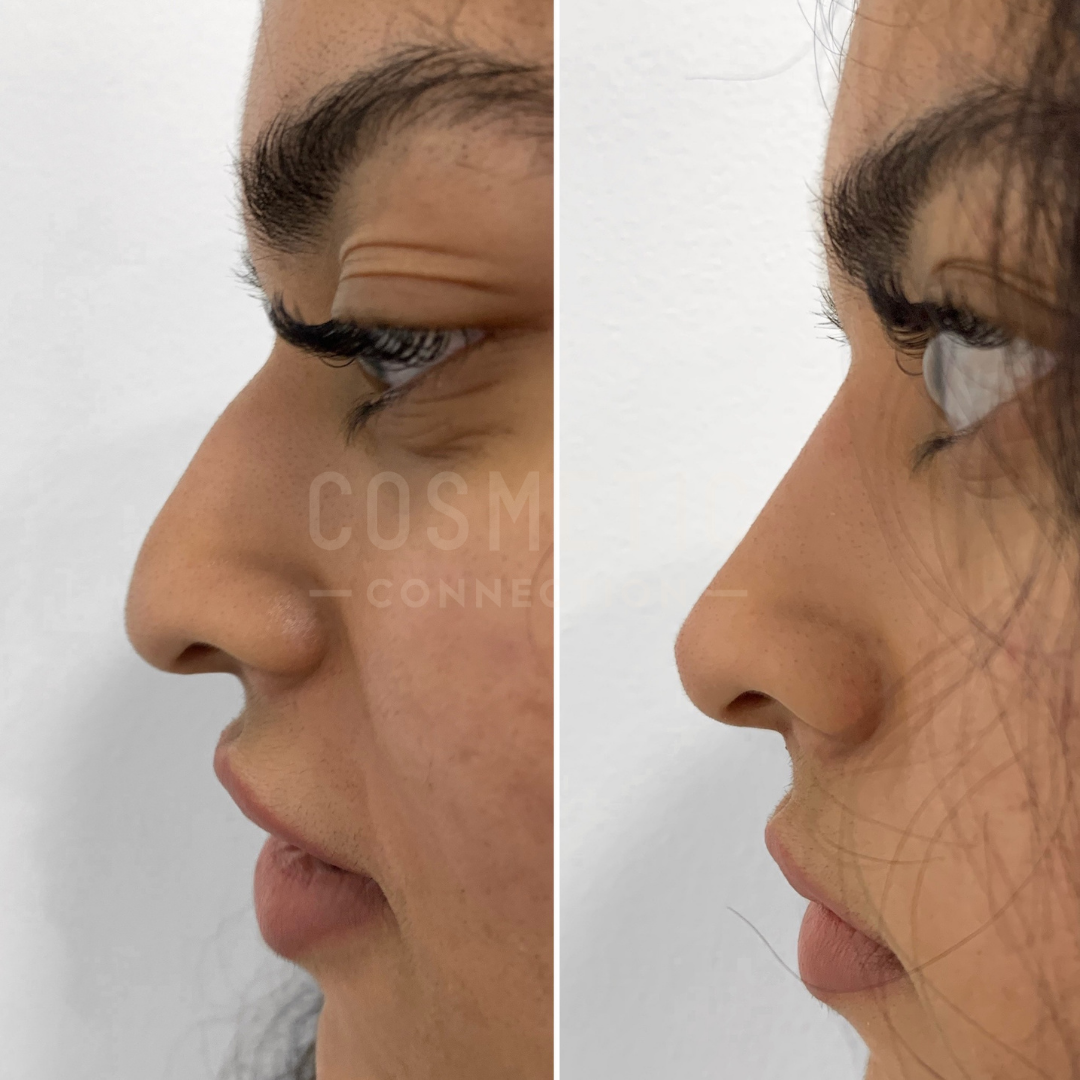Non-surgical rhinoplasty is also known as ‘nose reshaping’, ‘nose fillers’, ‘non-surgical nose job’, and ‘liquid nose job’.
There’s very little recovery time after non-surgical rhinoplasty. Here’s what you can expect:
Immediately after the procedure
- Very mild redness and swelling are common and usually subside within 24-48 hours.
- Bruising may occasionally occur and is usually mild, settling in 2-3 days.
- You may experience slight tenderness or discomfort at the injection site.
- Gently apply ice packs wrapped in a cloth to the affected area to reduce swelling and discomfort.
- Avoid touching your nose unnecessarily and refrain from wearing glasses that rest on the injection sites for a 7 days.
- Avoid alcohol and strenuous exercise for 24 hours.
Within the first 2-3 days
- Most noticeable swelling and bruising should subside.
- Continue applying ice packs if your swelling is slow to settle.
By the end of the first week
- Most visible signs of the procedure should be gone.
- Avoid sleeping on your face for at least 2-4 weeks to prevent filler migration.
Additional factors influencing recovery time
- Treatment factors: Some injectors are unnecessarily rough, increasing bruising, swelling and recovery time.
- Individual healing rate: Everyone heals at their own pace. Some people may experience longer recovery times than others.
Important points to remember
- While the recovery time is typically short, you should diligently follow the aftercare instructions to optimise your healing and result.
- Some very minor swelling and tenderness might persist for a few weeks, but should not be noticeable to others.
- If you experience moderate to severe pain, skin changes, persistent swelling, or any worrying symptoms, contact your doctor immediately.
Overall, non-surgical rhinoplasty offers a very quick recovery compared to surgical options. There is typically no downtime, but responsible aftercare and realistic expectations are key for a smooth and successful experience.


